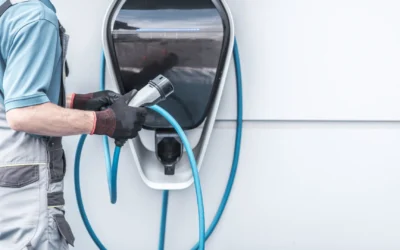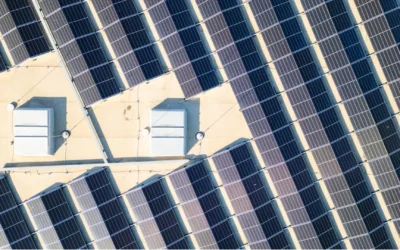President Elect Joe Biden is set to take oath on 20th January,2021, and although his win was confirmed on January 6th, the senate’s control was undecided until the recent victory of Senator Jon Ossof and Senator Raphael Warnock, both Democrats, in the Georgia run-off elections. This win splits the Senate 50-50, with the two independent senators usually siding with the Democrats, and this means if there is a tie on any issue, the deciding vote will be Vice President, Kamala Harris.
The outcome of the Georgia election has improved Biden’s ability to implement his proposed Clean Energy Revolution and Environmental Justice Plan (The Biden Plan). This will be the first time since 2011 that the Democrats control the entire legislative branch. Back in 2009, under President Obama, the American Recovery and Reinvestment Act allocated $90 billion for clean energy and climate related programs which was ten times larger than any previous clean energy bill. The Biden Plan appears to be even more ambitious.
The Senate requires a 60-member majority to pass legislation and the Democrats will not have this. There are two options to push legislation through:
- Executive Order – The President can issue an executive order or federal directive for the operations of the federal government. The problem with an executive order is that although they may provide a quick remedy by bypassing the Congress, these orders are subject to judicial review and can be blocked by judges. In addition, Congress can remove funding the order and it can be instantly overturned by another Presidential order.
- Reconciliation Bill- In the Senate a 60-member majority is required to pass a legislation, but for a reconciliation bill, a simple majority is all that is needed. Reconciliation is a special legislative process that paves the way to expedite consideration of certain tax, spending, and debt limit legislation. The bill starts with a congressional budget resolution that contains ‘reconciliation directives’ for specified committees. Each committee writes a bill to achieve its target and the Budget committee puts the bills together into one big bill. This bill has special status in the Senate, and it cannot be filibustered.
Bipartisan legislative action, with support from the House and the Senate is more sustainable and effective, especially when pertaining to climate change, since many years of sustained effort will be required to effect a real change.
While discussing the bipartisan support it is important to note that in all possible scenarios, other countries, especially China will not be allowed to become new destination for polluting power plants and industries. As this has the potential to offset the progress made by U.S. which may be sustainable in the long run but comes at a financial cost which appears huge initially. India in this case may get partial or relative relaxation in this regard keeping in view larger geopolitical objectives of United States.
Biden’s legislative agenda
Biden’s campaign presented a timeline for achieving net zero emissions by 2050 with an interim goal of halving emissions below 2005 levels by 2030. Clean electricity standards will ramp up to 75% by 2030. To achieve all these goals, Biden had indicated a $1.7 trillion package, but this number will probably increase, especially to cover additional infrastructure spending.
A Princeton study published in December 2020, details what it would cost to cease to emit any greenhouse gases by 2050. The study covers five scenarios but the common thread across all scenarios is the conversion of everything to electricity. Moving that electricity will require an enormous build-out of electric transmission lines. As one of the Princeton researchers, Jesse Jenkins, says “The current power grid took 150 years to build. Now, to get to net-zero emissions by 2050, we have to build that amount of transmission again in the next 15 years and then build that much more again in the 15 years after that. It’s a huge amount of change.”
Biden’s legislative agenda on climate change will establish a mechanism to enforce the net-zero emission targets no later than 2050 but will also include a target for 2025, (which is the end of his term). This will be done through investments in energy, climate research and innovation and resilient infrastructure. To ensure that the US achieves 100% clean energy economy and net zero emissions, the plan includes following investments in energy, climate research and innovation and resilient infrastructure:
- Require aggressive methane pollution limits for new and existing oil/gas operations.
- Employ a Federal government procurement system (which annually spends 500 billion USD) to push 100 percent clean energy and Zero Emission Vehicles (ZEVs).
- Make all U.S. government installations, buildings and facilities more efficient and climate ready.
- Reduce greenhouse emissions from the transportation sector. This happens to be the fastest growing source of U.S. climate pollution and the reduction will be carried out by enforcing the existing Clean Air Act and introducing extensive fuel economy standards. 100% of new sales for light/medium duty vehicles will be electrified and there will be yearly improvement on the fuel economy in heavy-duty vehicles. In addition, Biden will work with City and State Governments to deploy more than 500,000 new public charging outlets by the end of 2030 and will restore the full electric vehicle tax credit to incentivize the purchase of EVs
- Include advanced biofuels which will make agriculture a part of the climate change solution.
- Introduce aggressive appliance and building efficiency standards saving consumers money and reduce emissions. Biden will build on his efforts on ‘Recovery Act’ and will set a target of reducing the carbon footprint of U.S. building stock 50 percent by 2035, introducing incentives for deep retrofits combining appliance electrification, efficiency, and on-site clean power generation.
- Require public companies to disclose climate risks and greenhouse emissions from their operations supply chains.
- Every federal infrastructure investment should reduce climate pollution and consider the effects of greenhouse gas emissions and climate change.
- Invest $400 billion over ten years to create industries with a focus on clean energy research and innovation. Biden will create ARPA-C, a new, cross-agency Advanced Research Projects Agency bringing together top talent to focus on climate.
- Incentivize deployment of clean energy on fast track across the country especially in areas affected by climate change.
- Establish grid scale storage at 1/10th of the cost of lithium-ion batteries.
- Shift to small modular nuclear reactors at half the cost of today’s reactors.
- Move refrigeration and air conditioning to use refrigerants with no global warming implications.
- Zero net energy buildings at zero net cost.
- Employ renewables to produce carbon free hydrogen at the same cost as that from shale gas.
- Decarbonize industrial heat that comes from the manufacture of steel, concrete, chemicals and reimagining carbon neutral construction materials.
- Leverage the food and agriculture sector, to remove CO2 from the air and store it underground.
- Capture CO2 from the powerplant exhausts and storing it deep underground and utilizing it to make alternative products.
- Aviation constitutes nearly 2 percent of global gas emissions. One-year agenda aims to target greenhouse aviation emissions.
- Accelerate the development and deployment of carbon capture sequestration technology.
- Identify the future of nuclear energy to tackle climate emergency.
- Empower local communities to develop alternative transportation solutions that are cleaner.
- Partner with farmers and ranchers for better agriculture practices and deployment of digesters that generate new sources of revenues.
- Mitigate the climate impact of urban sprawl.
- Enacting a national strategy to develop a low-carbon manufacturing sector in every state.
Looking Forward
The global pandemic added another dimension to the analysis. Covid-19, and lockdowns associated with it, shrunk the U.S. economy by 3.6 % in 2020 (per World Bank). In addition, the vaccine deployment has been slower than expected and its long-term efficacy is still unknown. These issues add uncertainty to the economic forecast and could have the potential of affecting the Biden plan.
Recent Insights
PTR Enters Media Partnership with PCIM Asia Shanghai 2025
PTR Enters Media Partnership with PCIM Asia Shanghai 2025 SUNNYVALE, USA, June 12, 2025 – Power Technology Research (PTR), a global authority in market intelligence for the energy and power sectors, today announces its Official Media Partnership with PCIM Asia...
PTR Partners as Official Media Partner for Net Zero Europe – Solar & Energy Storage Summit 2025
PTR Partners as Official Media Partner for Net Zero Europe – Solar & Energy Storage Summit 2025 SUNNYVALE, USA, June 10, 2025 – Power Technology Research (PTR), a global authority in market intelligence for the energy and power sectors, is pleased to announce its...
Key Strategies for EV and EVCI Expansion
The authors, Mike Sheppard, CEO of PTR Inc. & Zainab Shah, Lead EVCI Analyst - Americas, highlight how the U.S. EV and charging infrastructure sectors are navigating a new era shaped by policy shifts and economic pressures. Following the rollback of key federal...
Harnessing the Sun: The Middle East’s Shift to Solar Power and Storage
In this article, PTR's CPO, Saqib Saeed, and Research Analyst, Siddiqa Batool, explain how the Middle East is accelerating its transition toward renewable energy—particularly solar power—supported by a growing focus on energy storage. Countries like Saudi Arabia, the...
Contact Sales:
Hassan Zaheer – Sales Lead
hassan.zaheer@ptr.inc
+49-89-12250950

